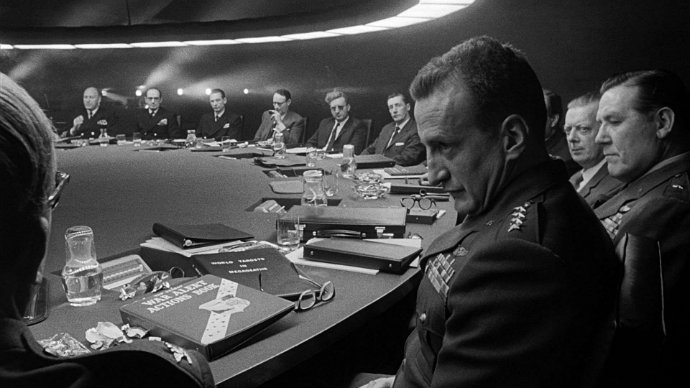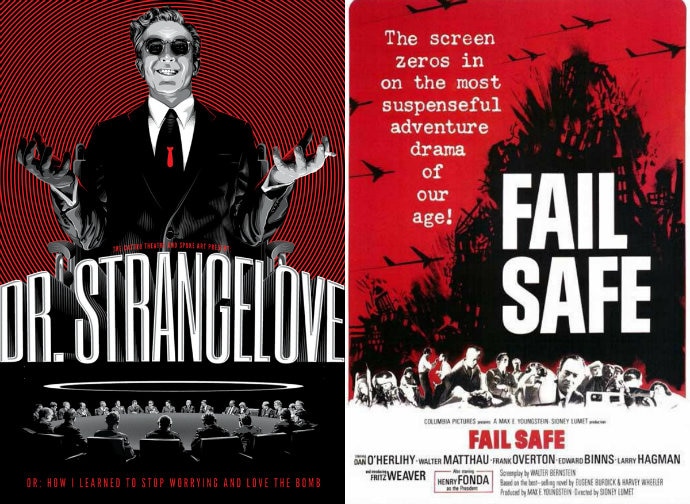'Dr. Strangelove' in Donald Trump's USA: How the reel warmongers have come alive

As Dr Strangelove Or: How I Learned to Stop Worrying and Love the Bomb (Dr Strangelove), the seminal Stanley Kubrick black comedy, set at the height of the Cold War, turns 55, the events depicted in the film not only seem more plausible than ever before — but also more relevant.
The film, where a trigger-happy American General, Brig. Gen. Jack D. Ripper (Sterling Hayden) decides to give it back to the ‘Reds’ by refusing to comply with the US President and giving the go-ahead to drop the bomb on the-then USSR, doesn't seem as funny as it did back then — because when the incumbent US President, Donald J Trump merrily tweets about bombing North Korea in response to their threat to bomb the US, it seems eerily straight out of the film.
One wonders, had Kubrick been alive today, how he would have taken to an era where the real US President almost perfectly embodies the reel warmongers he mocked in his film?
In 1964, when the film released, there was already enough paranoia amongs average Americans. Bomb shelters and apocalypse bunkers were as real as idyllic suburban existences. Kubrick used Peter George’s book, Red Alert, as the inspiration for Dr Strangelove, but it's his genius that saw the story of paranoid delusion, leading to the launch of an airborne preventive US Air Force nuclear attack upon the Soviet Union, turned into a comedy.

During the making of the film, there was news of Sidney Lumet directing a more serious version of the same imaginary events in a film called Fail Safe (1964), based on Fail-Safe, the best-selling novel by Eugene Burdick and Harvey Wheeler, where Peter Fonda played the American President.
But what made Dr Strangelove a bigger hit back then and a more readily recalled classic even today is the way Kubrick used humour to make the audience believe that what his film suggested was, in fact, plausible. Lumet’s film is a masterclass in filmmaking where his blocking and framing of characters creates tension for the audiences at the same level that his actors portrayed, but no matter how convincing the imagery, Fail Safe remains a ’film’ because it bases everything on a glitch.
By comparison, Kubrick filled the frame and narrative with loose cannons, whacked-out characters, who said and did the stupidest things — which, as a result, made it all too real.
Sample this — when the US President Merkin Muffley (Peter Sellers) says he was not willing to go down in history as the greatest mass-murderer since Adolf Hitler, General “Buck” Turgidson (George C. Scott) responds, ”Perhaps it might be better, Mr President, if you were more concerned with the American people than with your image in the history books.”
Kubrick started off as a photojournalist for Look magazine in New York, when he was in his late teens in the 1940s, before graduating to films.
And in films, Kubrick was a master at capturing people at their honest best — nearly every character in Dr Strangelove not only appears real but also bares their soul, irrespective of how briefly we see them.

Many people believe that Kubrick in Dr Strnagelove mocks — while Lumet in Fail Safe keeps it respectful.
At a basic level, it might seem so, but Kubrick never really lampoons or takes the viewer for granted, whereas Lumet’s characters seem cardboard cutouts.
In Dr Strangelove, the Air Force personnel, given the task, try second-guessing the orders till the last moment, whereas in Fail Safe, the men who get the doomsday order, following a glitch in the system, quietly execute them — despite it being a ’thinking film.’
In Fail Safe’s climax, the American President’s inability to stop the attack on the USSR sees him order Americans to drop a bomb on New York City in a bid to treat all men equally.
In Dr Strangelove, Kubrick doesn't mock the military — but the military-industrial complex, war hawks like General Turgidson and the US’s then-recent recruitment of Nazi scientists from WW2 to help develop its weaponry.
What truly makes Dr Strangelove: Or How I Learned to Stop Worrying and Love the Bomb an unlikely film of our times is its strange evocation of Donald J Trump.

The manner in which President Trump tweets what’s on his mind and mocks his opponents with a joke or a jibe to enhance his persona, is straight out of the Kubrick masterpiece.
Watching the entire scene where President Muffley calls the Russian premier to tell him how they “always talked about the possibility of something going wrong with the Bomb... The *Bomb*, Dmitri... The *hydrogen* bomb!…” and realising you're doing so in a world where someone like Trump is at the helm of things, is something that mere words cannot describe.

